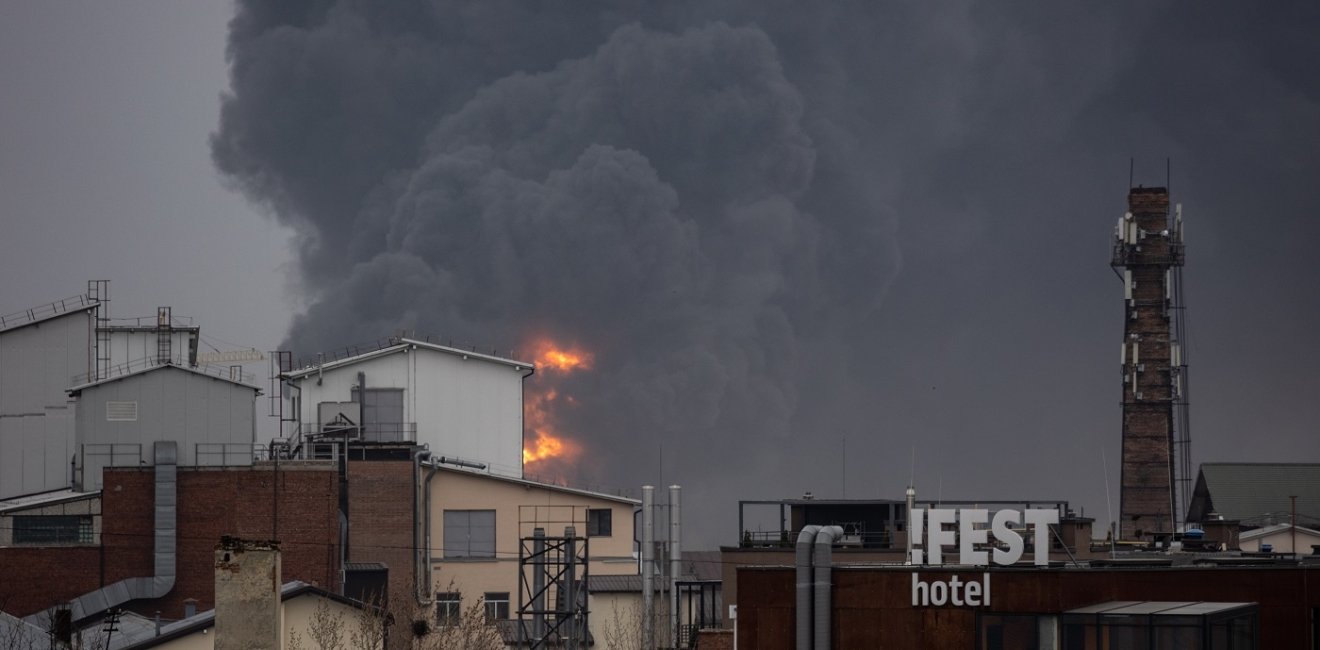
A blog of the Kennan Institute
In mid-October 2022, in the eighth month of the war, Russian forces conducted the most intensive air attacks against Ukraine, with the energy infrastructure as the key target. Earlier this year, I participated in assessing such risks and preparing recommendations for the Ukrainian government on how to withstand air attacks. Now Ukraine is facing these attacks. Most data are unavailable or classified, which makes sense during a war, but some key conclusions can be drawn based on information publicly available.
Why Has Russia Started Attacking the Power System Now?
Even before Russia unleashed its full-scale war against Ukraine on February 24, when the high risk of the invasion was clear, some analysts were concerned about possible massive attacks on the energy infrastructure and the likely outcomes. The concern was reasonable, insofar as electrical systems have been a favorite target of air attacks since the 1930s. But prior to February 24, many thought there would not be intensive strikes on energy facilities, based on the assumption that the Kremlin would want regime change in Ukraine and make the country accountable to Moscow. In that case Russia would not need to destroy the industries of the country it expected to control in the future, especially since the Russians planned to win in only a few weeks.
This assumption was partly valid. The only part of the energy infrastructure that sustained major damage during the first stages of the war was the fuel supply: key fuel depots and the only big refinery were destroyed by missiles during the first two months. But fuel supplies are crucial for logistics, and so play a vital role in wartime. In addition, Ukraine’s nuclear facilities experienced intensive and unexpected attacks.
It is very likely, then, that when Russian troops faced problems advancing in Ukraine and had to retreat after a successful counteroffensive by the Ukrainian army in Kharkiv and the South, the Kremlin decided to attack the power system. Besides creating immediate economic hardship and logistical problems, attacks on the power system are a powerful way to apply psychological pressure to citizens. Moreover, Ukraine had to pull air defense systems from the front lines to protect its power infrastructure across a greater territory. At this point, Ukraine lacks sufficient air defense systems, and Russia now has an advantage in pursuing air attacks after buying Iranian Shahed-136 “kamikaze” drones, which are more like single-use missiles.
The Scale of Russia's Attacks on the Power Infrastructure
In September, Russian missiles attacked power-generating facilities and substations, which caused interruptions of electricity supplies in Kharkiv oblast and in the cities of neighboring regions. Informally, Russian president Vladimir Putin admitted responsibility for these attacks on critical infrastructure and threatened to up the intensity of the attacks.
On October 10, Russia carried out the most massive missile and drone attack to date on Ukraine. Besides civil infrastructure, the key target was the energy grid, including electricity-generating and transmission infrastructure across the country. Heavy attacks on energy facilities were repeated the next day, with activity continuing over the next two weeks at a somewhat reduced level. Critical facilities in Kyiv, Dnipro, Ivano-Frankivsk, Kirovograd, Kharkiv, Khmelnytskyi, Lviv, Poltava, Sumy, Vinnitsya, Zaporizhzhia, Zhytomyr—literally across the whole country—were attacked by missiles on October 10–11.
The attacks of October 10–11 immediately affected the power system. Electricity-producing and distributing capacity was critically reduced, which meant demand could not be met. As a result, Ukraine had to suspend electricity exports to neighboring European states for an indefinite period, and some Ukrainian cities had to introduce rolling blackouts. Ninety percent of the city of Lviv was without power for many hours. By the end of the day on October 11, however, the electricity supply that sustained these attacks had been completely restored.
October 17–18 saw a new wave of attack, this time primarily with drones and fewer missiles. Less damage was incurred than during the previous week’s attacks, but it was still serious. Some cities, such as Zhytomyr, experienced power cut-offs. After these attacks, the power supply and the condition of the power system remained under Ukrainian control. But it is obvious that this second round of attacks was planned by the Russian army with the participation of Russian energy engineers.
The Status of the Power System
Because of the war, Ukraine had already lost a considerable part of its power capacity even before the October events. Total power-generating capabilities amounted to 56 GW before the war. Some 9 GW was produced by conventional large power plants that are now located in occupied territories, plus 6 GW by the Zaporizhzhia Nuclear Power Plant, which is occupied by Russian forces and was recently put into a cold shutdown state. Some facilities are no longer operating because they are located close to the line of hostilities, and some were damaged or destroyed by air attacks. Ninety percent of wind and 30 percent of solar power stations were destroyed or are located in occupied territories.
But the war has also led to a 30–35 percent reduction in power demand. Before the October attacks, Ukraine appeared capable of getting through the winter safely, and perhaps even able to export electricity during some months if no new damage occurred. But in addition to power-generating facilities, the power transmission infrastructure also plays a critical role. The infrastructure connects power stations and consumers across the country and is crucial for Ukraine’s electricity exports and imports. And now this infrastructure is under attack.
Ukraine’s power system was designed to provide a reliable power supply in any event, which means it has extra capacity and reserve lines to supply the power. It is likely that the massive attacks of October 10–11 represented Russia’s effort to shut down the power system entirely. But the power system demonstrated its reliability, and energy workers exhibited professionalism and dedication.
The Prospects
No matter how technically reliable any power system is, none is designed to withstand repeated massive air attacks. And repairing the system needs more time than the frequency of the most recent air attacks permits, and many spare parts. The proper operation of any technical system, including a national power system, requires a critical number of elements working properly. And frequent air attacks, by breaking up these elements, are undermining normal reliable operations.
There are just a few ways to help protect the power supply in Ukraine: (1) provide Ukraine with the necessary air defense weapons, (2) provide Ukraine with aid in the form of spare parts and equipment to repair damaged facilities, and (3) put pressure on Russia. All else will be handled by Ukrainian energy companies and the army.
The opinions expressed in this article are those solely of the author and do not reflect the views of the Kennan Institute.
Author

Director, Energy Program, Ukrainian Institute for the Future

Kennan Institute
After more than 50 years as a vital part of the Wilson Center legacy, the Kennan Institute has become an independent think tank. You can find the current website for the Kennan Institute at kennaninstitute.org. Please look for future announcements about partnership activities between the Wilson Center and the Kennan Institute at Wilson Center Press Room. The Kennan Institute is the premier US center for advanced research on Eurasia and the oldest and largest regional program at the Woodrow Wilson International Center for Scholars. The Kennan Institute is committed to improving American understanding of Russia, Ukraine, Central Asia, the South Caucasus, and the surrounding region through research and exchange. Read more

Explore More in Focus Ukraine
Browse Focus Ukraine
Talking to the Dead to Heal the Living

Ukrainian Issue in Polish Elections


